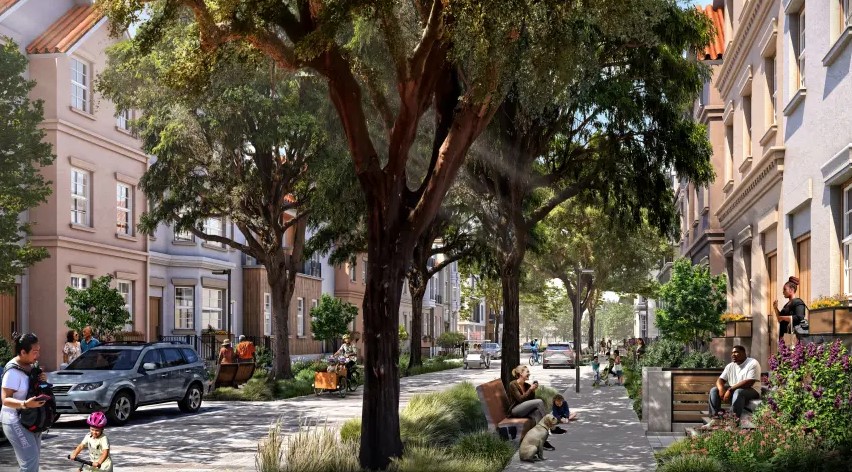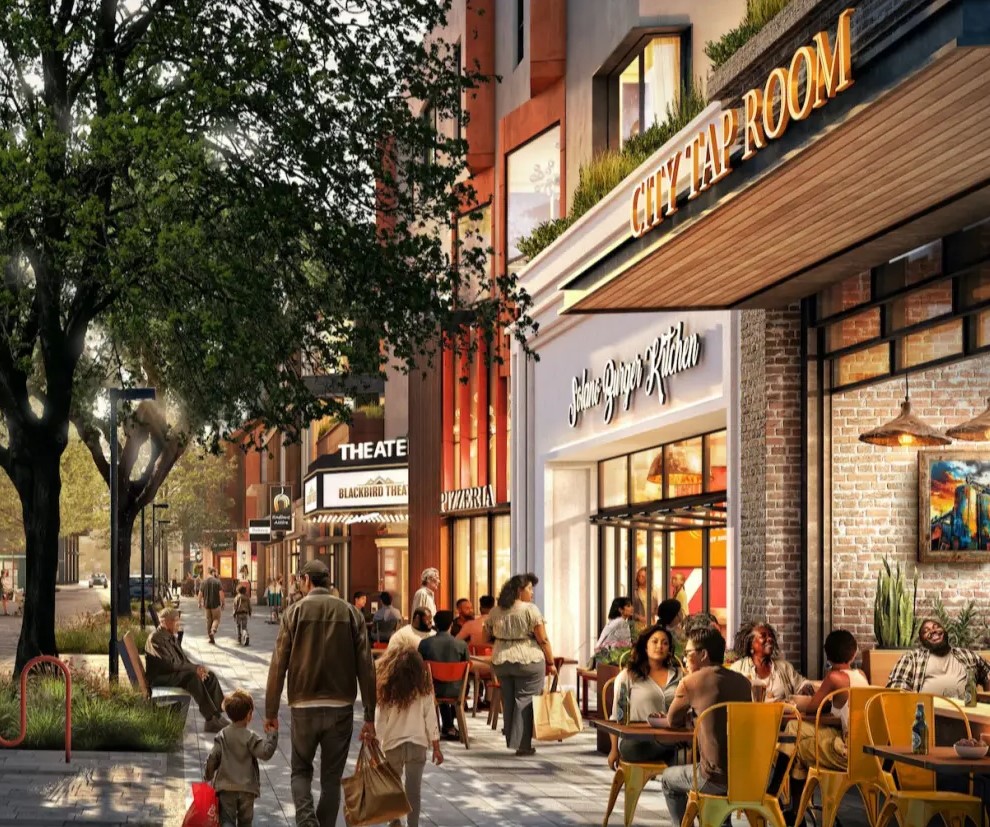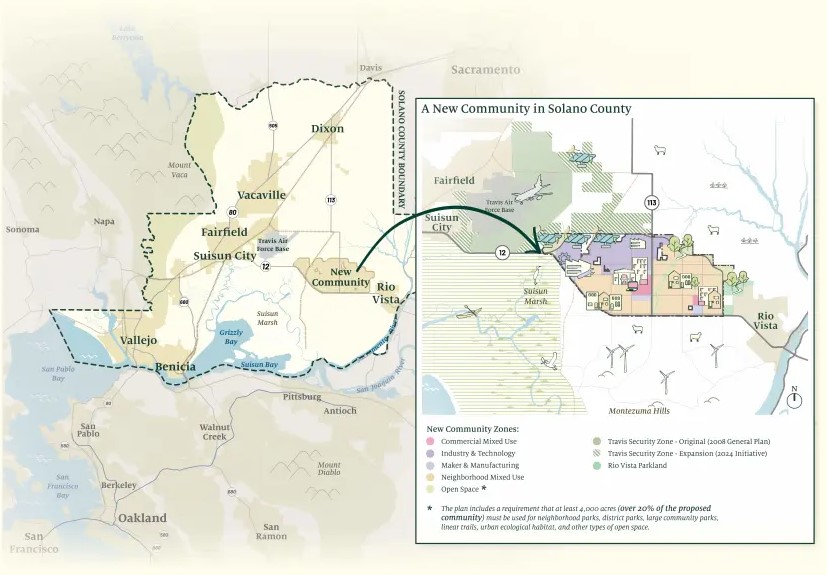If you one day find yourself in the mysterious California city being built by a group of rich Silicon Valley investors, you likely won't find Bentleys, BMWs, or Porsches. In fact, you might have a hard time finding a vehicle at all.
That's because much of the design concept is borrowed from principles used before the advent of the Model T, which is unique for a "city of the future." However, city designers from California Forever are hesitant to use that tag for the project.
It's not "backward looking" or "utopian," they said on their website.
The investors, Flannery Associates, bought more than 50,000 acres northeast of San Francisco, not far from Travis Air Force Base, as part of a nearly $1 billion investment with an ambitious vision.
What to expect when you visit
It may feel like it's from another century, perhaps even an ancient one, as California Forever's urban planning head Gabriel Metcalf described it to the Guardian. Forget heavily paved roads and corridors for gas-guzzlers.



There will be a heavy dose of "walkable urbanism" — a focus on easy movement on foot for a social lifestyle full of trees.
"One way to define walkability is this very humble idea that people should be able to walk to local shopping streets," Metcalf said to the Guardian.
It's something he feels society lost when suburbia exploded. He calls car-based cityscapes a dominant American feature. In cities elsewhere on the planet, most people move about with scooters, public transit, and ride-share services when not on foot, he said in the story.
"Up through the 1920s, there was an unbroken tradition of city building that stretched back to the ancients," he told the newspaper. "People don't even notice until they go to another country and are reminded what a joy city life can be when spaces are planned around people, instead of cars."
As a result, his design style might feel a bit foreign stateside.
TCD Picks » Quince Spotlight

Project descriptions that have surfaced also include planet-friendly concepts, tens of thousands of homes, and solar panels. Less pavement, abundant sun-reflective roofing, and shade are features to help with cooling, akin to passive techniques. Up to 400,000 residents are in the billing, as well.
What problem will the city solve?
The project hasn't been without skeptics, likely due to the extreme wealth of the investors involved. Flannery includes former Goldman Sachs trader Jan Sramek (also the founder of California Forever), among others.
But, Metcalf claimed to the Guardian that solving the housing crisis is a leading motivation.
About 30% of the nation's homeless are in California, the University of California San Francisco reports. Metcalf told the newspaper that "bold action" is needed to fix the problem. Building a new city seemed to him and the funders to be a better option than wading through slow-paced government bureaucracy for solutions, per the story.

"We have a lot of explaining to do to get people on board and help people understand the vision," Metcalf said.
What's next?
The developers need to earn voter approval later this year to start the project. Then, they will need to attract a population. Thankfully for them, there are past examples from which to learn.
Malaysia's $100 billion Forest City was billed as a paradise for hundreds of thousands of people on an island created by developers in the ocean. But when Insider visited the city in 2022, it was mostly empty and far from living up to the hype at the time.
The secret to success in California might include reasonable expectations.
"We're not proposing a utopia. We're just proposing a city. I'm not arguing this can solve every problem. But I would argue that this is another tool, and it could help," Metcalf said for the Guardian article.
Join our free newsletter for cool news and actionable info that makes it easy to help yourself while helping the planet.













